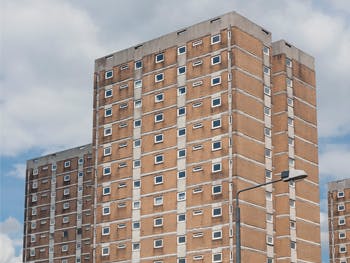UNIVERSITY NEWS LAST UPDATED : 02 MARCH 2017

A new academic project will explore whether post-war high-rise public housing in London and Birmingham still has a role to play in providing homes, amid a growing shortage of housing and a trend to replace the architecture of the period.
Tim Lewis, a PhD researcher at Birmingham City University, will look into the raft of tower blocks built in urban areas between the 1950s and 1970s and reassess the reasons for their construction, the problems they encountered and their viability as homes today.
In Birmingham alone more than 400 tower blocks were constructed over the two decades, around 200 of which have since been demolished.
The project will take an in depth look at all forms of high-rise, including early architect-led ‘mixed developments’ that combined houses, low and high-rise flats, and maisonettes to form small communities.
It will also examine later structures such as the system build developments that largely focused on increasingly tall developments in urban areas.
With the UK currently experiencing a shortage of available housing a qualitative study into the reasons, ideals and viewpoints surrounding high-rises could play a major role in shaping future developments.
Tim Lewis said: “High-rise is an iconic form of housing that has divided opinion since its inception and has become a symbol of social housing and the welfare state, whether good or bad it deserves a re-evaluation to inform its continued viability as housing.
Case studies will examine examples in London and Birmingham and explore whether the original ideals may meet the needs of modern urban housing.
The research will ask whether properties deemed to be unsuitable for many of the original tenants - such as families – could provide a viable solution for a new demographic of people living in cities.
Views on conserving buildings will also be explored, ranging from evaluating the importance of these buildings through the extent to which redevelopment is possible, and whether gentrification is an inevitable consequence of conservation.
Birmingham is already witnessing the demolition of a number of its iconic Twentieth Century buildings, including Madin’s Central Library and the Smallbrook Queensway development, and a number of local groups are calling for a reassessment of Birmingham’s 20th century heritage.
Tim Lewis, who is also a Visiting Tutor and lecturer on the University’s nationally recognised Conservation of the Historic Environment post-graduate course, added: “It was particularly exciting to embark on this research as it exemplifies the University’s expertise in the fields of Architecture and Design and Engineering and the Built Environment.”
Tim Lewis is one of 50 STEAM Scholars at Birmingham City University whose research is funded as part of the University’s £3 million initiative to create new subject knowledge and to power cultural, societal and economic improvements in the West Midlands.